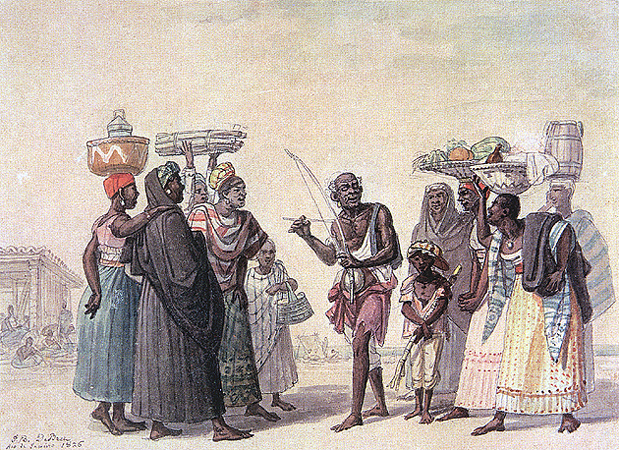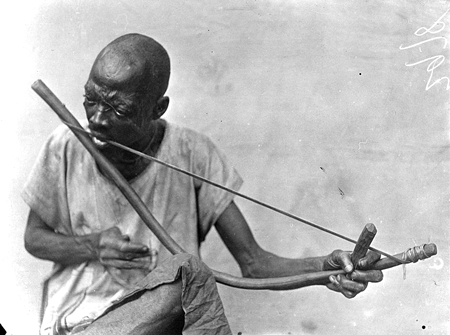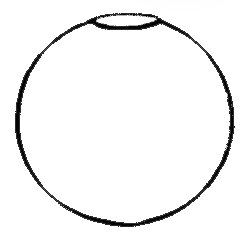|
Kalumbu
The kalumbu, or kalumbo, is a traditional instrument of the Tonga and Ila people of Zambia and Zimbabwe. A single metal-stringed bow played with a stick is lashed onto a calabash gourd that acts as a resonating chamber. The kalumbu player manipulates the resonance of the instrument by moving the gourd toward and away from his or her chest. Though now quite rare in Africa, the kalumbu is considered the predecessor of the Afro-Brazilian berimbau used in Capoeira performances. A similar instrument, the ''dende'', is played by children in Botswana. The berimbau The berimbau () is a single-string percussion instrument, a musical bow, originally from Africa, that is now commonly used in Brazil. The berimbau would eventually be incorporated into the practice of the Afro-Brazilian martial art ''capoeira'' ... of Brazil is another similar instrument. References Musical bows Zimbabwean musical instruments {{Composite-instrument-stub ... [...More Info...] [...Related Items...] OR: [Wikipedia] [Google] [Baidu] |
Berimbau
The berimbau () is a single-string percussion instrument, a musical bow, originally from Africa, that is now commonly used in Brazil. The berimbau would eventually be incorporated into the practice of the Afro-Brazilian martial art ''capoeira'', the berimbau leads the capoeiristas movement in the ''roda''—the faster the berimbau is playing the faster the capoeirista moves in the game. The instrument is known for being the subject matter of a popular song by Brazilian guitarist Baden Powell, with lyrics by Vinicius de Moraes. The instrument is also a part of Candomblé-de-caboclo tradition. History The berimbau's origins have not been fully researched, though it is most likely an adaptation of African gourde musical bows, as no Indigenous Brazilian or European people use musical bows. The way the ''berimbau'' and the ''m'bulumbumba'' of southwest Angola are made and played are very similar, as well as the tuning and basic patterns performed on these instruments. The ass ... [...More Info...] [...Related Items...] OR: [Wikipedia] [Google] [Baidu] |
Tonga People (Zambia And Zimbabwe)
The Tonga people of Zambia and Zimbabwe (also called 'Batonga') are a Bantu ethnic group of southern Zambia and neighbouring northern Zimbabwe, and to a lesser extent, in Mozambique. They are related to the Batoka who are part of the Tokaleya people in the same area, but not to the Tonga people of Malawi. In southern Zambia they are patrons of the Kafue Twa. They differ culturally and linguistically from the Tsonga people of South Africa and southern Mozambique. The Tonga of Zimbabwe The BaTonga people of Zimbabwe are found in and around the Binga District, Binga village the Kariba area, and other parts of Matabeleland. They number up to 300,000 and are mostly subsistence farmers. ln Zimbabwe the language of the Tonga people is called ''chitonga''. The Tonga People were settled along Lake Kariba after the construction of the Kariba Dam wall. They stretch from Chirundu, Kariba town, Mola, Binga to Victoria Falls. In the 1800s, during the reign of Mzilikazi and Lobengula, ... [...More Info...] [...Related Items...] OR: [Wikipedia] [Google] [Baidu] |
Ila People
The Ila people are an ethnic group in The Republic of Zambia who make up 0.8 percent of the total population. The Ila are closely related in language and culture to their more numerous Tonga neighbours in Southern Province. The Ila people mainly reside in Namwala District, which is the principal town for the Ila, Itezhi-Tezhi and Mumbwa districts spread across seventeen chiefdoms. Most Ila grow enough food to feed their families and to cover expenses for physical needs and their children's educational expenses. More educational and career opportunities are available in the larger towns and village centers. Some Ila raise animals such as chickens, goats, or pigs on a small scale, and mostly cows, though that is usually for tradition and prestige. In fact, the belief that cows are a sign of wealth and value undergirds an Ila funeral tradition. The funeral ceremony lasts several days. On the day after burial, cows are slaughtered. It is believed that the more that are killed, the gre ... [...More Info...] [...Related Items...] OR: [Wikipedia] [Google] [Baidu] |
Zambia
Zambia (), officially the Republic of Zambia, is a landlocked country at the crossroads of Central Africa, Central, Southern Africa, Southern and East Africa, although it is typically referred to as being in Southern Africa at its most central point. Its neighbours are the Democratic Republic of the Congo to the north, Tanzania to the northeast, Malawi to the east, Mozambique to the southeast, Zimbabwe and Botswana to the south, Namibia to the southwest, and Angola to the west. The capital city of Zambia is Lusaka, located in the south-central part of Zambia. The nation's population of around 19.5 million is concentrated mainly around Lusaka in the south and the Copperbelt Province to the north, the core economic hubs of the country. Originally inhabited by Khoisan peoples, the region was affected by the Bantu expansion of the thirteenth century. Following the arrival of European exploration of Africa, European explorers in the eighteenth century, the British colonised the r ... [...More Info...] [...Related Items...] OR: [Wikipedia] [Google] [Baidu] |
Zimbabwe
Zimbabwe (), officially the Republic of Zimbabwe, is a landlocked country located in Southeast Africa, between the Zambezi and Limpopo Rivers, bordered by South Africa to the south, Botswana to the south-west, Zambia to the north, and Mozambique to the east. The capital and largest city is Harare. The second largest city is Bulawayo. A country of roughly 15 million people, Zimbabwe has 16 official languages, with English, Shona language, Shona, and Northern Ndebele language, Ndebele the most common. Beginning in the 9th century, during its late Iron Age, the Bantu peoples, Bantu people (who would become the ethnic Shona people, Shona) built the city-state of Great Zimbabwe which became one of the major African trade centres by the 11th century, controlling the gold, ivory and copper trades with the Swahili coast, which were connected to Arab and Indian states. By the mid 15th century, the city-state had been abandoned. From there, the Kingdom of Zimbabwe was established, fol ... [...More Info...] [...Related Items...] OR: [Wikipedia] [Google] [Baidu] |
Musical Bow
The musical bow (bowstring or string bow, a subset of bar zithers) is a simple string instrument used by a number of South African peoples, which is also found in the Americas via slave trade. It consists of a flexible, usually wooden, stick 1.5 to 10 feet (0.5 to 3 m) long, and strung end to end with a taut cord, usually metal. It can be played with the hands or a wooden stick or branch. It is uncertain if the musical bow developed from the hunting bow, though the San or Bushmen people of the Kalahari Desert do convert their hunting bows to musical use. Types of bow include mouth-resonated string bow, earth-resonated string bow, and gourd-resonated string bow. History There is speculation that the hunting bow may have been used as a musical instrument from as early as circa 13,000 B.C. Henri Breuil surveyed the Trois Frères in France caves and made an engraving that attempted to reproduce a c. 13,000 B.C. cave painting into a black-and-white lithograph engraving ... [...More Info...] [...Related Items...] OR: [Wikipedia] [Google] [Baidu] |
Calabash
Calabash (; ''Lagenaria siceraria''), also known as bottle gourd, white-flowered gourd, long melon, birdhouse gourd, New Guinea bean, Tasmania bean, and opo squash, is a vine grown for its fruit. It can be either harvested young to be consumed as a vegetable, or harvested mature to be dried and used as a utensil, container, or a musical instrument. When it is fresh, the fruit has a light green smooth skin and white flesh. Calabash fruits have a variety of shapes: they can be huge and rounded, small and bottle-shaped, or slim and serpentine, and they can grow to be over a metre long. Rounder varieties are typically called calabash gourds. The gourd was one of the world's first cultivated plants grown not primarily for food, but for use as containers. The bottle gourd may have been carried from Asia to Africa, Europe, and the Americas in the course of human migration, or by seeds floating across the oceans inside the gourd. It has been proven to have been globally domesticated (an ... [...More Info...] [...Related Items...] OR: [Wikipedia] [Google] [Baidu] |
Resonance Chamber
A resonance chamber uses resonance to enhance the transfer of energy from a sound source (e.g. a vibrating string) to the air. The chamber has interior surfaces which reflect an acoustic wave. When a wave enters the chamber, it bounces back and forth within the chamber with low loss (See standing wave). As more wave energy enters the chamber, it combines with and reinforces the standing wave, increasing its intensity. Since the resonance chamber is an enclosed space that has an opening where the sound wave enters and exits after bouncing off of the internal walls producing resonance, commonly acoustic resonance as in many musical instruments (see Sound board (music)), the material of the chamber, particularly that of the actual internal walls, its shape and the position of the opening, as well as the finish (porosity) of the internal walls are contributing factors for the final resulting sound produced. See also * Cavity resonator (electrical version) * Resonance * Soun ... [...More Info...] [...Related Items...] OR: [Wikipedia] [Google] [Baidu] |
Resonance
Resonance describes the phenomenon of increased amplitude that occurs when the frequency of an applied periodic force (or a Fourier component of it) is equal or close to a natural frequency of the system on which it acts. When an oscillating force is applied at a resonant frequency of a dynamic system, the system will oscillate at a higher amplitude than when the same force is applied at other, non-resonant frequencies. Frequencies at which the response amplitude is a relative maximum are also known as resonant frequencies or resonance frequencies of the system. Small periodic forces that are near a resonant frequency of the system have the ability to produce large amplitude oscillations in the system due to the storage of vibrational energy. Resonance phenomena occur with all types of vibrations or waves: there is mechanical resonance, orbital resonance, acoustic resonance, electromagnetic resonance, nuclear magnetic resonance (NMR), electron spin resonance (ESR) and reso ... [...More Info...] [...Related Items...] OR: [Wikipedia] [Google] [Baidu] |
Musical Instrument
A musical instrument is a device created or adapted to make musical sounds. In principle, any object that produces sound can be considered a musical instrument—it is through purpose that the object becomes a musical instrument. A person who plays a musical instrument is known as an instrumentalist. The history of musical instruments dates to the beginnings of human culture. Early musical instruments may have been used for rituals, such as a horn to signal success on the hunt, or a drum in a religious ceremony. Cultures eventually developed composition and performance of melodies for entertainment. Musical instruments evolved in step with changing applications and technologies. The date and origin of the first device considered a musical instrument is disputed. The oldest object that some scholars refer to as a musical instrument, a simple flute, dates back as far as 50,000 - 60,000 years. Some consensus dates early flutes to about 40,000 years ago. However, most historians be ... [...More Info...] [...Related Items...] OR: [Wikipedia] [Google] [Baidu] |
Africa
Africa is the world's second-largest and second-most populous continent, after Asia in both cases. At about 30.3 million km2 (11.7 million square miles) including adjacent islands, it covers 6% of Earth's total surface area and 20% of its land area.Sayre, April Pulley (1999), ''Africa'', Twenty-First Century Books. . With billion people as of , it accounts for about of the world's human population. Africa's population is the youngest amongst all the continents; the median age in 2012 was 19.7, when the worldwide median age was 30.4. Despite a wide range of natural resources, Africa is the least wealthy continent per capita and second-least wealthy by total wealth, behind Oceania. Scholars have attributed this to different factors including geography, climate, tribalism, colonialism, the Cold War, neocolonialism, lack of democracy, and corruption. Despite this low concentration of wealth, recent economic expansion and the large and young population make Afr ... [...More Info...] [...Related Items...] OR: [Wikipedia] [Google] [Baidu] |
Capoeira
Capoeira () is an Afro-Brazilian martial art that combines elements of dance, acrobatics, music and spirituality. Born of the melting pot of enslaved Africans, Indigenous Brazilians and Portuguese influences at the beginning of the 16th century, capoeira is a constantly evolving art form. It is known for its acrobatic and complex maneuvers, often involving hands on the ground and inverted kicks. It emphasizes flowing movements rather than fixed stances; the '' ginga'', a rocking step, is usually the focal point of the technique. Although debated, the most widely accepted origin of the word ''capoeira'' comes from the Tupi words ''ka'a'' ("forest") ''paũ'' ("round"), referring to the areas of low vegetation in the Brazilian interior where fugitive slaves would hide. A practitioner of the art is called a capoeirista (). Though often said to be a martial art disguised as a dance, capoeira served not only as a form of self defence, but also as a way to maintain spirituality and cu ... [...More Info...] [...Related Items...] OR: [Wikipedia] [Google] [Baidu] |






